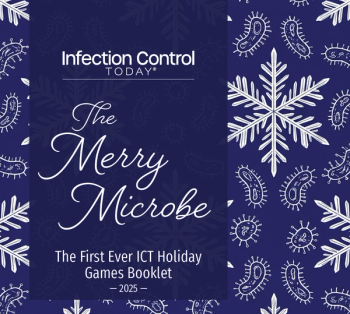
- Infection Control Today, November 2021 (Vol. 25 No. 9)
- Volume 25
- Issue 9
Troubled Water Makes for Sick Hospitals
Brian Flannigan: “The reason why water quality and water safety is so important in sterile processing is that there have been direct connections made between the water systems and hospital infections: operating room infections, asset life problems, maintenance problems, staining and discoloration of equipment.”
Water needs to flow in hospitals and office buildings because stagnant water and/or the pipes it sits in can quickly become reservoirs of pathogens. That’s a message Brian Flannigan, vice president for corporate sales and business development with Phigenics, an Illinois-based water management company, brought last month to the annual conference of the International Association of Healthcare Central Service Materiel Management (IAHCSMM). Too often during the COVID-19 pandemic, water was shut off and stayed off for long periods, which caused many problems, Flannigan tells Infection Control Today®.
“Water treatment equipment and water systems are not designed to operate sporadically,” says Flannigan, whose presentation was titled “Water Safety & Quality During Medical Device Reprocessing.” He continues: “They operate much better whenever they operate continuously. There have been a number of operational issues that have arisen during the pandemic around sterile processing during operations and during the restart of operations.”
He said the result of this is much greater awareness in and outside of health care about the importance of water management. “We have seen and recognized many of the health care heroes, the ones on the front lines who responded to the pandemic and the heroic efforts that they provided to support patients coming through the door,” said Flannigan. “What we haven’t seen necessarily are the behind-the-scenes folks who have been responsible for [managing] the infrastructure of those hospitals.”
Flannigan said, “We are strong proponents of the multidisciplinary team and the benefit that that brings.” That team should comprise infection preventionists, environmental services (EVS), building management, and, of course, sterile processing professionals. It needs to follow standards mandated by the Centers for Medicare & Medicaid Services (CMS), standards that mirror those created by the American Society of Heating, Refrigerating and Air-Conditioning Engineers (ASHRAE), Flannigan says. ASHRAE Standard 188 contains specific benchmarks when it comes to managing waterborne pathogens and water systems.1
“CMS said that a health care facility had to have a water management program in place,” says Flannigan. “This risk management process for water systems starts with a multidisciplinary team. As you can imagine, the facility engineers…are on this team. But a key player on that team is always infection prevention. We’ve seen that the water management programs in some hospital systems are driven by infection prevention as opposed to facility management. But in all cases, they partner with others in the hospital.”
EVS workers play a crucial role in ensuring that water doesn’t become contaminated. “As they clean the rooms, they are often tasked with making sure they run the fixtures in the room,” says Flannigan, who adds that in many rooms, patients are often too sick to shower or use the sink. “Very sick patients may not see water usage for weeks at a time,” says Flannigan. “EVS is how most hospital systems and water management teams make sure that water flows through the fixtures and that the disinfectant they have in the water systems has a chance to be effective.”
Although infection preventionists and EVS members staff the water management team at many health care facilities, it is significant that Flannigan is making his presentation at the conference of the largest organization representing sterile processing professionals.
“The reason why water quality and water safety are so important in sterile processing is that there have been direct connections made between the water systems and hospital infections: operating room infections, asset life problems, maintenance problems, staining and discoloration of equipment,” says Flannigan. “There have been all kinds of issues that have been traced back to water systems over time. I would suggest that the awareness of that is increasing. The fact that we have this so-called water management team within the hospital that is responsible for making sure that, for instance, the overall distribution system for the building is safe. That team is now being leveraged because it’s the same group of players that for all intents and purposes would help support the sterile processing areas and the water systems that support them.” p
Reference:
Newly updated standard 188 includes a comprehensive update to enforceable, code-intended language. American Society of Heating, Refrigerating and Air-Conditioning Engineers. August 2018. Accessed September 29, 2021. https://www.ashrae.org/news/esociety/newly-updated-standard-188
Note: In January 2022, IAHCSMM will change its name to the Healthcare Sterile Processing Association.
Articles in this issue
about 4 years ago
Sterile Processing Unscripted: Know When to Innovateabout 4 years ago
How Hospital Administrators Can Help IPs Manage HAIsabout 4 years ago
Many Masking Problems Can’t be Maskedabout 4 years ago
The Long Arm of MRSAabout 4 years ago
Discussing Pros, Cons of Universal Masking Post-COVID 19about 4 years ago
IPs Are "True Blessing"over 4 years ago
$2.1 Billion Going to Infection Prevention Effortsover 4 years ago
Sepsis Sufferers Getting Antibiotics Quickerover 4 years ago
Massive Study of Long COVID-19 Is LaunchedNewsletter
Stay prepared and protected with Infection Control Today's newsletter, delivering essential updates, best practices, and expert insights for infection preventionists.






